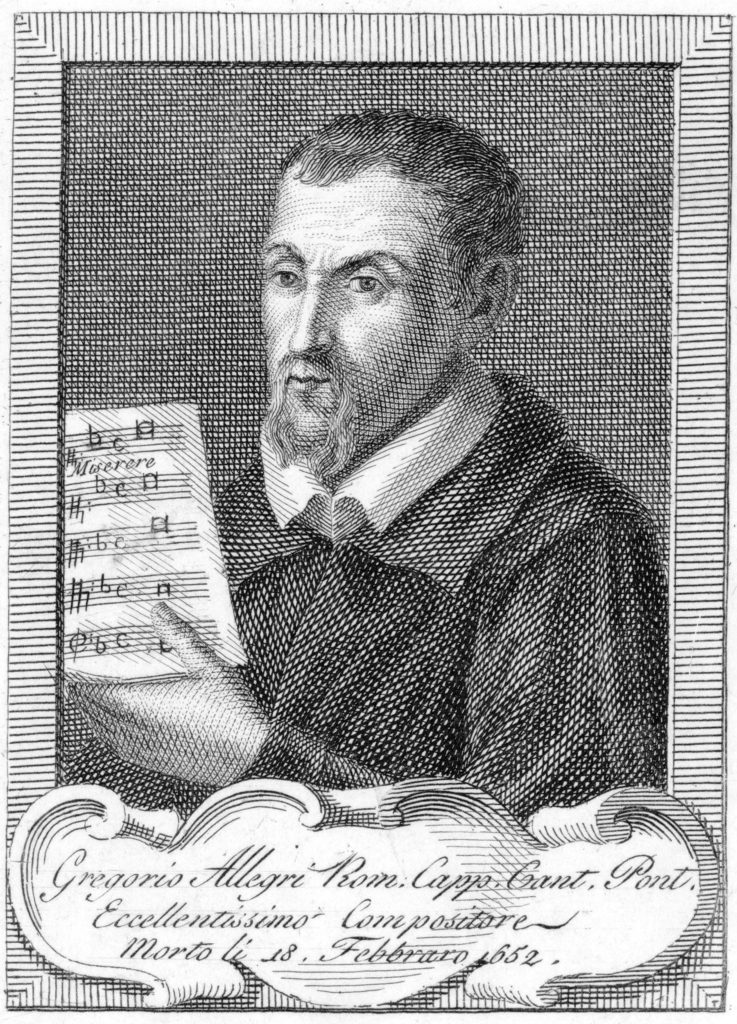
We mark the death on February 7, 1652 – 370 years ago today – of the Italian composer and Sistine Chapel singer Gregorio Allegri, in Rome. He had been born in that great and ancient city 70 years before, in 1582.
Allegri is remembered today for a work he composed in the 1630s, during the reign of Pope Urban VIII, entitled Miserere mei, Deus (which means “Have mercy on me, O God”). The Miserere is a setting of Psalm 50 (Psalm 51 in Protestant Bibles).
Allegri composed his Miserere specifically (and exclusively!) for use in the Sistine Chapel (the Pope’s private chapel), to be performed during the Tenebrae services of Holy Week, which occur on the Thursday, Friday, and Saturday before Easter Sunday. Allegri’s setting calls for two separate choirs, one employing five voices and the other, four voices. The choirs alternate with one another until the last part of the piece, during which they join to conclude the Miserere in nine-part polyphony.

The Sistine Chapel
As the Miserere was performed over the years, embellishments were spontaneously added by the singers, embellishments that eventually became part of any performance but were never written down.
(For our historical information: Allegri’s Miserere is often identified as a Renaissance work, but it is not. I know better than anyone how arbitrary are such period designations as Renaissance, and Baroque, and Classical, but the Miserere was composed in the 1630s, by which time Allegri would have been listening to that quintessential Baroque era entertainment of opera for years, if not decades. The Miserere is, indeed, a Baroque era work. Its perceived conservatism – which continues to cause many to identify it as a sixteenth century, rather than a seventeenth century work – is a product of the generally conservative nature of the Palestrina-inspired, Roman Church music of the time.)
At some unknown date, the Vatican forbade the transcription, publication, and/or performance of the Miserere outside of the Tenebrae services at the Sistine Chapel, under pain of excommunication! It sort of goes without saying that over the years, the mystique surrounding Allegri’s Miserere became huuuge.
With such proscriptions in place, for many decades the Vatican assumed that the Miserere would be safe from piracy. However, those authorities at the Vatican had not anticipated the attendance at a Tenebrae Service at the Sistine Chapel, likely on Thursday, April 12, 1770, of a 14-year-old wunderkind from Salzburg named Wolfgang Mozart (1756-1791).…
Continue reading, only on Patreon!
Become a Patron!Listen on the Music History Monday Podcast
Podcast: Play in new window
Subscribe: Apple Podcasts | Spotify | Pandora | iHeartRadio | RSS | More
